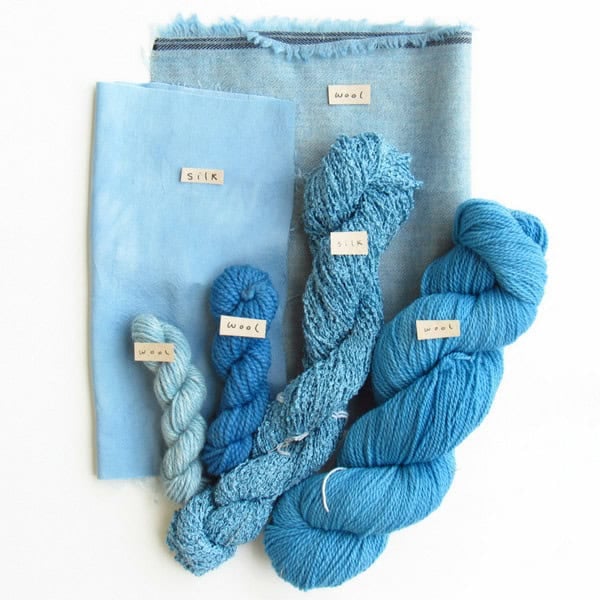This week: Saxon blue vs. indigo on plant fibers and overdyeing linen
Every week, we are emailed with questions from our natural dye community asking simple and complex questions that we thought might be worth sharing. Of course, all of your burning questions are answered by natural dyer in chief, Kathy Hattori, Founder of Botanical Colors.
On your website you say you cannot use Saxon Blue on plant fibers. I have some very raw handmade pineapple fabric, so Saxon Blue does not work on this? Would indigo blue?
That is correct: a traditional indigo vat will work on pineapple or other plant fibers and you can dye it by creating an indigo vat, however, when you say you have a “very raw fabric,” if the fiber is extremely stiff you should scour the fabric first, then dip it into indigo. Saxon Blue is indigo pigment that has been converted with a strong acid, so it can be used like our other liquid extracts, but it only adheres successfully to animal fibers such as wool, alpaca, mohair and silk. You cannot use it to make a traditional indigo vat.
Read: How To Make a Traditional Indigo Vat and How to Scour.
Hello, I’m curious if you have perhaps done an indigo dip over a grey linen. If so, how was the color? Would it be better to dye the linen grey and then dip, or would it be better to indigo dip and then dye grey? I have only worked with indigo on white material and this project must all be from scratch, so trying to eliminate purchasing grey linen yardage if I need to start with white.
If you are trying to get a grayish light blue shade, then you can first dip a pale blue color, wash, then dye the fabric gray. You can also overdye previously dyed fabric with indigo. Either will work but the colors will be slightly different. The thing to note if you purchase pre-dyed (and presumably synthetically dyed) fabric is that the high alkalinity of the indigo vat may change the base gray color, or cause the color to run in the vat. You will need to experiment and decide which results are best for your project. Good luck!

